On May 11, 2025, engineering education ushered in a profound change in China's march towards new quality productivity. A unique “first class” was held in the front line of national major engineering construction. Shenzhen University School of Civil and Transportation Engineering 2024 “international engineering innovation class” of 30 undergraduates, under the leadership of the class director Chen Xiangsheng academician, together with researchers from France, Vietnam, Pakistan, India and other countries, members of the first party branch of the civil engineering faculty, in-depth national major projects shield construction site with the “China's most beautiful subway station”--Shenzhen Gangxia North Underground Transportation Hub, carried out a scenario (mathematics and intelligence) teaching practice of “teaching according to the person, according to the need, according to the time”.
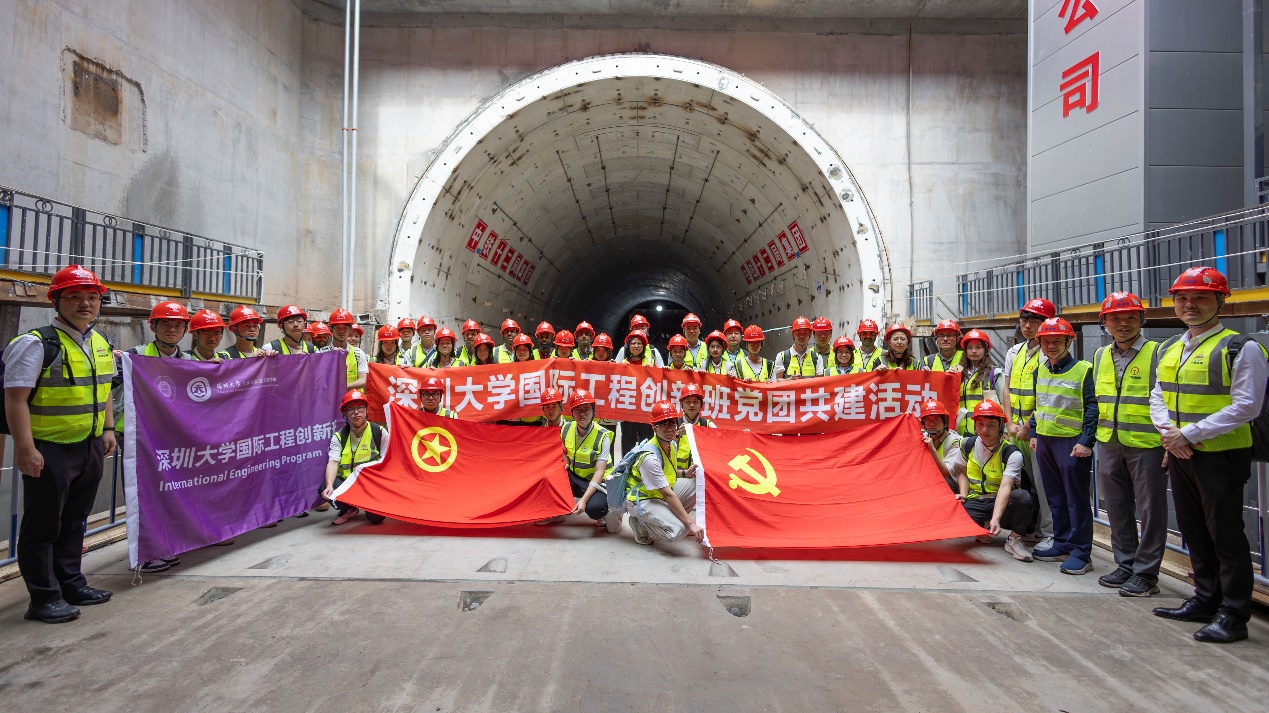
New era empowers new classroom: engineering frontline is the classroom, super shield is the teaching tool
In the project department of Shenzhen River Railway of China Railway Twelfth Bureau Group, students stepped into the shield machine of “Pilot” with a diameter of 12.85 meters to learn the process of tunneling and tube piece assembling from a distance. This giant equipment is responsible for the construction of the No. 1 shield tunnelling interval, which needs to cross 3 sections of soft and hard uneven strata, 6 fracture zones and 15 sections of broken zones, and 12 high-risk sources such as the Beijing-Hong Kong-Macao Expressway, Shenzhen-Huizhou Intercity Railway and Shenzhen Metro Lines 5 and 15, etc., which is one of the most challenging urban tunneling projects at present. Subsequently, the students visited the pit project (No.2 working shaft), which is more than 50 meters deep, to experience the challenges of safety control and structural stability of deep pit construction, and through the physical cutter display and animation demonstration in the project exhibition hall, they systematically understood the whole process technology system from the principle of shield tunnelling to the intelligent construction, and established the three-dimensional engineering system of “Concept-Design-Construction”. Construction" of three-dimensional engineering cognition.
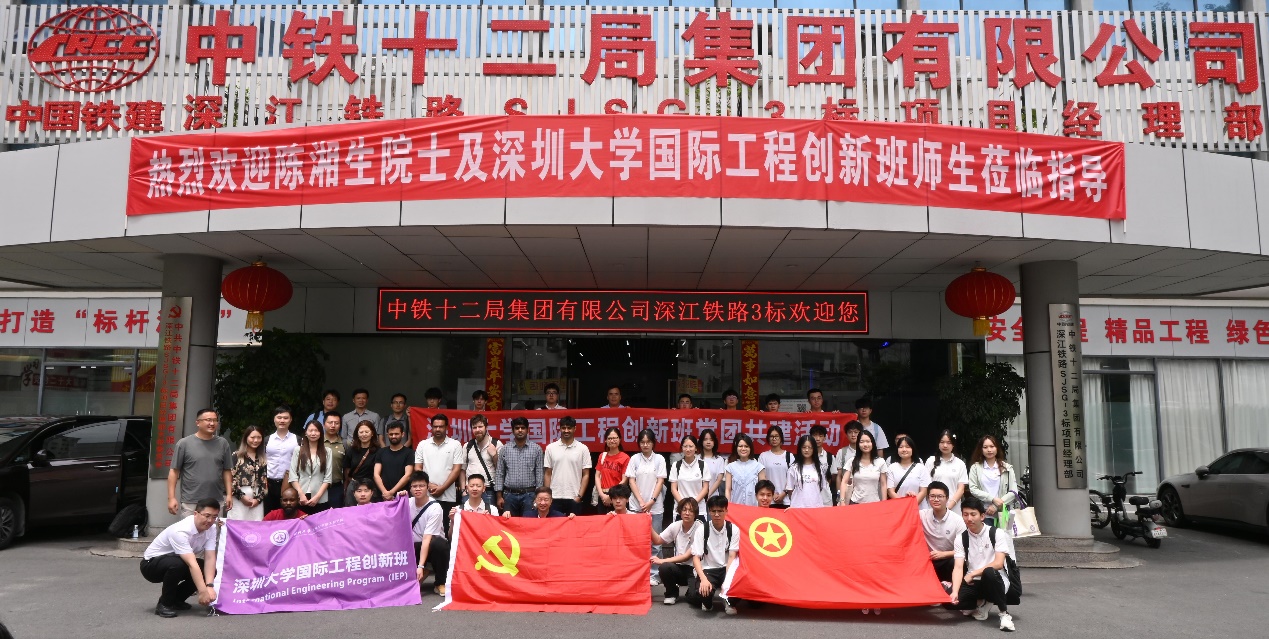
New era calls for new teaching: Situational (numerical and intellectual) case teaching, academicians lead the “first lesson”
At the project site, Academician Chen Xiangsheng of Shenzhen University gave an impromptu lecture on “Thinking from Intelligent Geotechnical Engineering Exploration to Digital Intelligent Civil Engineering”. Starting from the three leaps in civil engineering, Academician Chen looked forward to a new picture of future civil engineering driven by big data and empowered by artificial intelligence, and sent a message to the students: "The future belongs to those who are able to solve complex problems with knowledge. The International Engineering Innovation Class explores the “two-to-one (on-campus mentor + off-campus mentor, educating one student) and one-person-one strategy (teaching according to the needs of each individual, educating the best students themselves)” in the senior year of the undergraduate program and tries to break through the paradigm. The number of hours of classroom teaching has been greatly reduced through the innovation of teaching materials in the Mathematical Intelligence Scenario, as well as more teacher-student transitions and interactions in the classroom. Free up more time to assist students to participate in research, engage in engineering practice and travel to discover their hobbies and potentials. Cultivate students' curiosity to ask questions and dare to question, especially their self-learning ability. Shift from the dissemination of knowledge as the main focus to the innovation of teaching philosophical discernment by identifying problems, questioning the sources, active thinking, and transpersonal interaction between teachers and students. Cultivate students' habit of facing challenges head-on, continuous learning, innovation and lifelong learning. As well as the persistent quality of enduring loneliness and love.
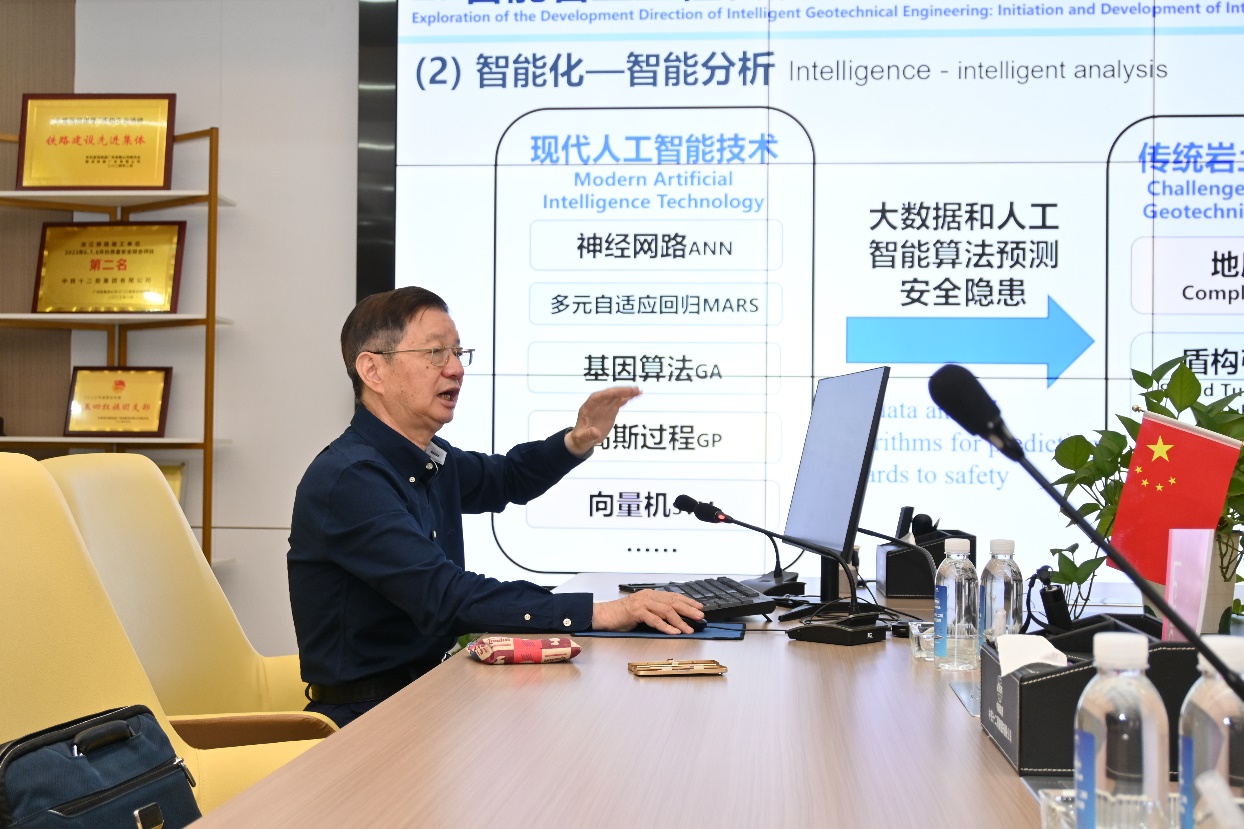
Exploring “China's Most Beautiful Metro Station”: A Journey to Gangxia North Station Inspires Teachers and Students
In the afternoon, all teachers and students went into the underground hub of Shenzhen Gangxia North, which is known as “the most beautiful subway station in China” and “the eye of Shenzhen”. As an important transportation hub where five lines converge, the station is breathtaking with its grand volume of 224,900 square meters, 48×51 meters column-free space design and cyberpunk style that integrates “science and technology + art”. The design team's on-site explanation restored Academician Chen Xiangsheng's learning and thinking in the whole process of planning and positioning, structural innovation and urban integration as the leader in charge of the project construction at that time. This is not only a shocking experience of the convergence of engineering and humanities, but also opens up a new perspective and creative inspiration for students to design future urban space.
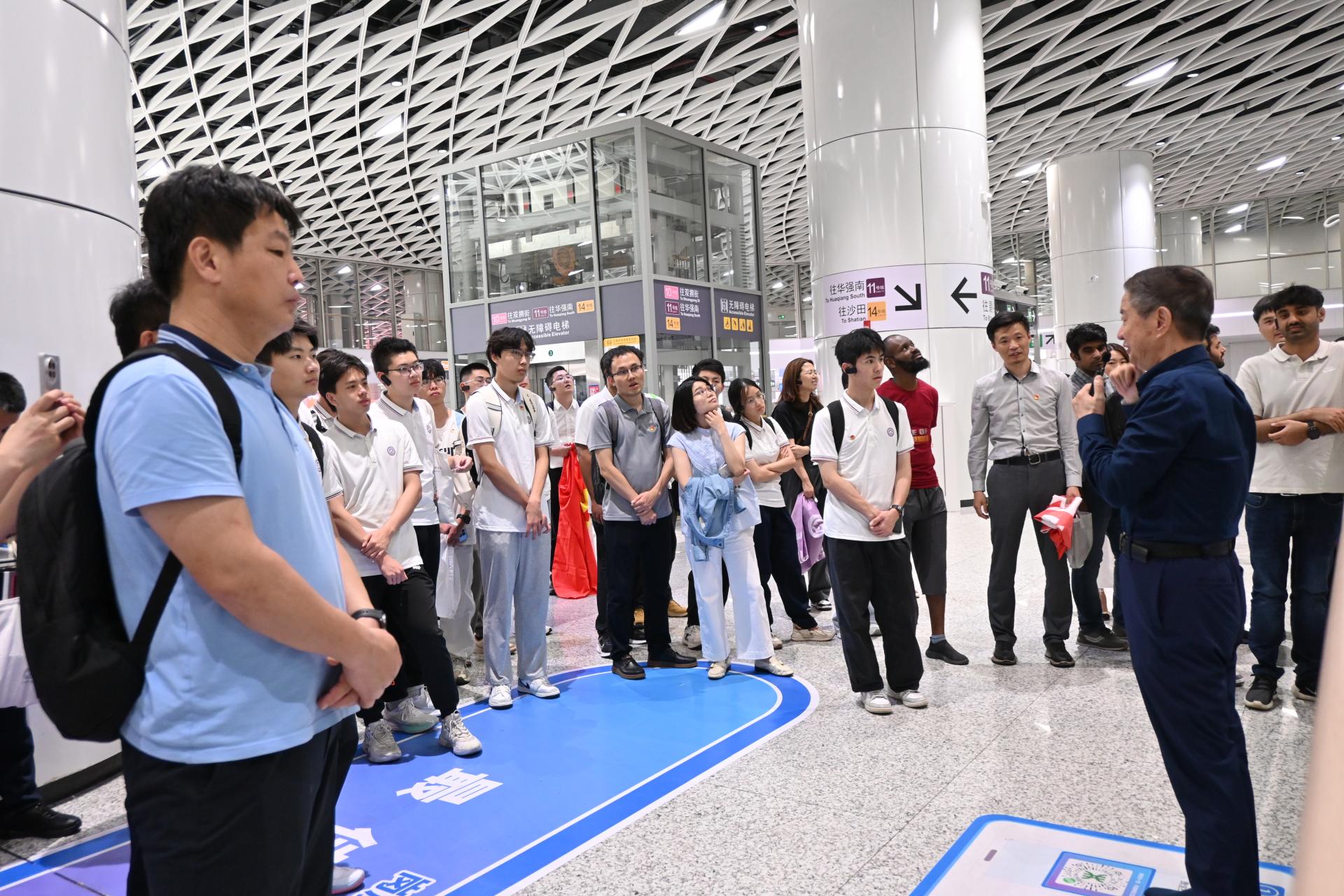
Unlocking a New Mode in a New Era: Deeper Integration of Chinese and Foreign Exchange, Further Enhancement of Engineering Awareness
This “first on-site lesson” is not only a technical journey, but also an in-depth exploration of internationalization and compound talent cultivation. In the interactive exchanges with post-doctoral students from many countries, Chinese undergraduates confidently talked about the wisdom and practice of “China's super engineering”, and discussed in-depth on topics such as shield construction and intelligent construction, showing the initial quality and potential of international engineering talents.
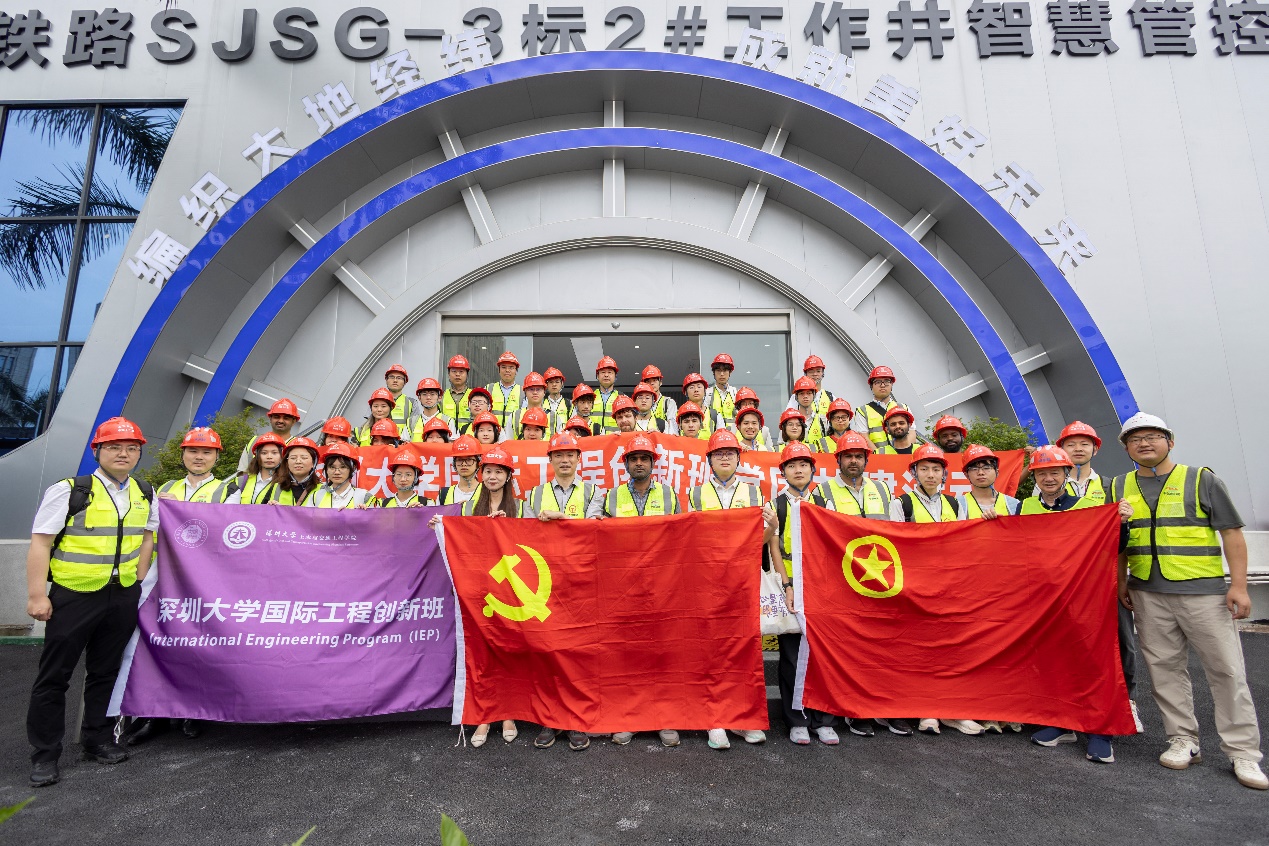
This “first class of national major projects” is the vivid practice of the teaching mode innovation of “International Engineering Innovation Class” of Shenzhen University in the context of the new era. Engineering out of books, knowledge into practice, talent in the first line of refining, the spirit of growing in the common learning. Education is the first, the future can be expected.